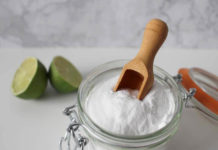Many women alter the color of their hair in some way, whether it’s just a few hints or a radical departure from their natural hue all together. In the past, it wasn’t possible to dye your hair while pregnant, but advances in the beauty industry have made it easier to do so.
You can read on to find out what you can and can’t do with your hair color highlights during pregnancy.
Pregnant and Hair Colouring
Being pregnant is one of life’s most thrilling experiences. There are many decisions to be made before the arrival of the baby. A fresh set of considerations must be made by women when it comes to making decisions regarding their own bodies when they have a fetus in the womb.
Pregnant women must now take into account both their own well-being and the well-being of their unborn child when they make decisions. Many pregnant women may be unsure about whether or not to dye their hair while they’re pregnant.
Some women bleach, dye, or highlight their hair on a regular basis, but as with many other pregnancy-related decisions, it’s critical to do your research and understand the potential consequences. Absolutely Ayur black hair colour shampoo is dermatologist-approved, safe for repeated use, and provides long-lasting results. 100% colour coverage with no side effects.
Can you dye your hair while pregnant?
The connection between pregnancy and hair dyeing is dangerous because of how the color is put on. Getting a full dye job meant that the hair dye would come into contact with the skin, which was thought to be bad for the fetus, especially in the first trimester.
It turns out that most research, on the other hand, has found that both permanent and semi-permanent dyes aren’t very toxic and are safe to use while you’re pregnant with your child. The small amounts of dye that may be absorbed by the scalp usually stay in the skin, which makes the chances of them getting to the fetus very low.
Read Also: How Does Sugar Affect Weight Loss?
You should be aware that hair dying may not be the only aesthetic procedure to be concerned about if you are expecting a child. The chemical treatments that women employ on their hair, such as coloring, are just one of many, and each type may have an impact on a woman’s pregnancy.
Curling or creating a permanent wave on the hair is accomplished by applying two separate solutions to the hair. The first is the waving solution, which gives your curls the tightness you seek, while the second is a neutralizer, which stops the curling process in its tracks.
Bleaching your hair entails the application of hydrogen peroxide, and it can be done in conjunction with other sorts of Hair colouring techniques. Curly hair can also be straightened with the help of relaxers. Their compositions can be made up of either lye (sodium hydroxide) or non-lye (potassium, lithium, and guanidine hydroxide) solutions.
These forms of hair treatments may increase the likelihood of hazardous substances entering your bloodstream and then passing through the placenta to the unborn child, according to the CDC. If you regularly bleach, perm, or relax your hair, you should discuss it with your obstetrician-gynecologist before putting these chemicals on your hair during pregnancy.
During pregnancy, the structure of your hair itself may also alter, rendering these chemical treatments unsuitable for achieving the desired results in your hair. Women who take more folic acid have reported that their hair is shinier, thicker, and grows faster, but other women have reported the inverse: that their hair is thinner, thinner, and grows slower.
In the absence of the necessary prenatal vitamins and minerals, your hair may become dry, brittle, and more prone to breaking during pregnancy. Adding hair dye or other chemical treatments to damaged hair might cause it to become even more damaged. It is also possible that the color will not “take” evenly.
In some cases, depending on the treatment you are using, you may want to consult your doctor. However, there are a few things you can do to minimize your chemical exposure to a bare minimum when you’re expecting.
How to minimize exposure?
While it comes to coloring your hair when pregnant, it’s a little different than when you’re breastfeeding. Breast milk often contains the same types of chemicals found in your bloodstream, including those from the foods and beverages you consume.
This is why doctors advise against consuming alcoholic beverages or eating extremely hot foods while nursing a child. The chemicals in the best hair colour are taken into the bloodstream in minute amounts, and they will be even less prevalent in your breast milk if you are nursing your child. Consequently, the chances of their getting into the milk and posing a threat to an infant are slim to none.
If you decide to color or otherwise treat your hair while breastfeeding, use the same precautions you would take while pregnant, such as carefully following the recommendations, doing so in a well-ventilated environment, and performing an allergic response patch test before proceeding.
Recommendations for Safely Coloring
1. Second Trimester: Although it is safe to color one’s hair while pregnant because the colors used are not very harmful, some experts advise pregnant women to hold off on coloring their hair or using chemical hair treatments until the second or third trimester, depending on the dye used.
2. Ask your Doctor First: Even if you do your homework, you should always seek the advice of your gynecologist first. You should rely on their advice because they are the experts in your own healthcare issue and will be able to provide you with the most accurate information.
3. Patch Test: Do a patch test on a small section of your scalp before using a treatment on your full head. In numerous ways, pregnancy hormones can alter women’s bodies. Test a little area initially to see if you have an allergic reaction.
4. Try Different: Pregnant women who are looking for the safest ways to color their hair should have a look at all the numerous possibilities available to them like ammonia free hair color during pregnancy. Highlights or balayage may be a better alternative to dying your entire head of hair one color.
Bottom Line
Pregnancy and Hair colouring are not always mutually exclusive activities. There are a variety of possibilities for a new hue or style that you may uncover with some investigation. Always consult with your doctor before applying any type of color or chemical treatment to your hair.
You can bring the box with you or a list of the contents, as well as an explanation of the treatment process. If you are still concerned, wait until the second or third trimester, or until after you have delivered your baby, before coloring or treating your hair.




































